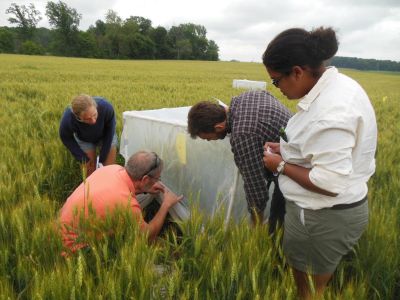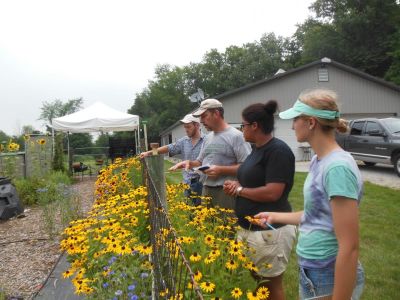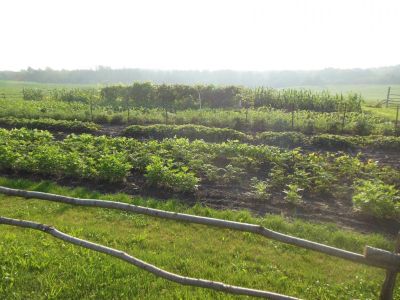Burmese Gardens, Amish Horses, and Business Planning

Weeks just fly by! So much has happened since the last blog. We finished the first half of the program and we have started with the second pair of classes: Agroecology and Small Farm Management. Unfortunately, that also meant we had to say bye to Andre. But thankfully we were able enjoy his company as we learned about integrated pest management and what research is happening with that at Michigan State University. We also were invited to tour and learn a little bit about their student run organic farm.
Continuing on organic farming, some Burmese farming techniques and how they work with American agricultural methods was explained to us at Catherine Kasper Place, a refugee assistance organization in Fort Wayne. From there, we heard about what goes into an orchard at Orchard Hill Farms. We got the inside scoop on how hard it is to tend to thousands of trees instead of a couple in your backyard.

Speaking of fruits, we got around to harvesting the rest of the cherries from the second tree and got the nice surprise of the first apricots ever collected in ASI history; they were so good! The gardens are looking great too. Last week, we were able to trellis the cucumbers, which made it look great but I ended up with scratchy arms. Who knew cucumber plants were so irritating to the skin?
We are finally done thinning the sorghum field, thank heavens! That was not a very fun job. It might be due to the fact that the days we were working on it was the worst days. Those days were either humid and sticky, raining, or just plain hot.
On a happier, note we got to learn about wild edibles with Paul Steury. He even made us a dish of rice cooked with mulberries he learned from the Miami Native Americans. How cool is that! We ate some more wild edibles at Fox Trail Farm, an organic CSA. It seems like our visits with them are cursed. The first time we had to reschedule due to a storm, and this time a storm surprised us there. We still had a great visit of their farm once the storm passed. But on the way back we were reminded how much weather is important in agriculture with the sight of flat cornfields due to the high wind of the storm. We even had to remount some of our own corn.

That morning we went to Crystal Valley, an Amish organic farm. It was awesome to see how they balance their beliefs and lifestyle with technology and regulations, like the required cooler for their milk that runs on a diesel generator. They had quite a few animals on the farm, but the only ones we had not crossed paths with yet were the horses. They had so many horses, from ponies to transportation horses to work horses. The workhorses were the biggest horses I’ve ever seen.
In class we are starting to work on our own business plan. We get to prepare ourselves for the future and be creative. Mine is going to be on my own future farm so I can get a sense of not only what it might cost to get it started, but also so I can get my ideas lined up.
There is so much going on, and so much that has yet to be done. I can’t wait for more news experiences, including baby guineas fowl that are going to hatch at the end of the month from our brooding chicken we call Buthilda (also know as “Broodhilda”).
– Krystel Pierre, 2013 ASI student




